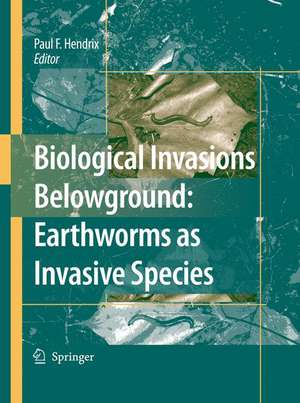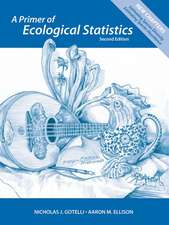Biological Invasions Belowground: Earthworms as Invasive Species
Editat de Paul F. Hendrixen Limba Engleză Hardback – 21 dec 2006
| Toate formatele și edițiile | Preț | Express |
|---|---|---|
| Paperback (1) | 636.94 lei 6-8 săpt. | |
| SPRINGER NETHERLANDS – 22 noi 2010 | 636.94 lei 6-8 săpt. | |
| Hardback (1) | 643.34 lei 6-8 săpt. | |
| SPRINGER NETHERLANDS – 21 dec 2006 | 643.34 lei 6-8 săpt. |
Preț: 643.34 lei
Preț vechi: 756.86 lei
-15% Nou
Puncte Express: 965
Preț estimativ în valută:
123.10€ • 134.14$ • 103.73£
123.10€ • 134.14$ • 103.73£
Carte tipărită la comandă
Livrare economică 23 aprilie-07 mai
Preluare comenzi: 021 569.72.76
Specificații
ISBN-13: 9781402054280
ISBN-10: 1402054289
Pagini: 136
Ilustrații: IV, 129 p.
Dimensiuni: 178 x 254 x 13 mm
Greutate: 0.5 kg
Ediția:2006
Editura: SPRINGER NETHERLANDS
Colecția Springer
Locul publicării:Dordrecht, Netherlands
ISBN-10: 1402054289
Pagini: 136
Ilustrații: IV, 129 p.
Dimensiuni: 178 x 254 x 13 mm
Greutate: 0.5 kg
Ediția:2006
Editura: SPRINGER NETHERLANDS
Colecția Springer
Locul publicării:Dordrecht, Netherlands
Public țintă
ResearchCuprins
Biological invasions belowground—earthworms as invasive species.- Dispersal and clonal diversity of North-European parthenogenetic earthworms.- Lumbricid earthworm invasion in the Carpathian Mountains and some other sites in Romania.- Invasion patterns of Lumbricidae into the previously earthworm-free areas of northeastern Europe and the western Great Lakes region of North America.- Earthworm invasion into previously earthworm-free temperate and boreal forests.- Earthworm invasions in the tropics.- Earthworm invasions of ecosystems devoid of earthworms: effects on soil microbes.- The influence of invasive earthworms on indigenous fauna in ecosystems previously uninhabited by earthworms.- Invasion of exotic earthworms into ecosystems inhabited by native earthworms.- Introduced earthworms in agricultural and reclaimed land: their ecology and influences on soil properties, plant production and other soil biota.- Policy and management responses to earthworm invasions in North America.
Textul de pe ultima copertă
The most conspicuous biological invasions in terrestrial ecosystems have been by exotic plants, insects and vertebrates. Less conspicuous but possibly of equal importance are invasions by soil invertebrates, which are occurring literally beneath our feet. Familiar examples include the South American fire ant (Solenopsis invicta) which has invaded North America and Australia, and the New Zealand flatworm (Arthurdendyus triangulatus) which has become wide-spread in the United Kingdom; both have caused considerable ecological and economic damage. There is now evidence that exotic earthworm invasions are increasing world-wide and may be having significant impacts on soil processes and plant communities in some regions. Much remains to be learned about these ‘cryptic’ biological invasions. The papers in this book are based on efforts by an international group of soil ecologists to assess the biological and ecological mechanisms of earthworm invasions, their geographic extent and impacts on terrestrial ecosystems, and possible means by which earthworm invasions might be mitigated.
Caracteristici
Considers possible strategies for preventing and mitigating earthworm invasions Broadens the discussion on invastion biology and ecology to belowground systems Explores mechanisms and impacts of invasions by an important group of 'ecosystem engineers'











